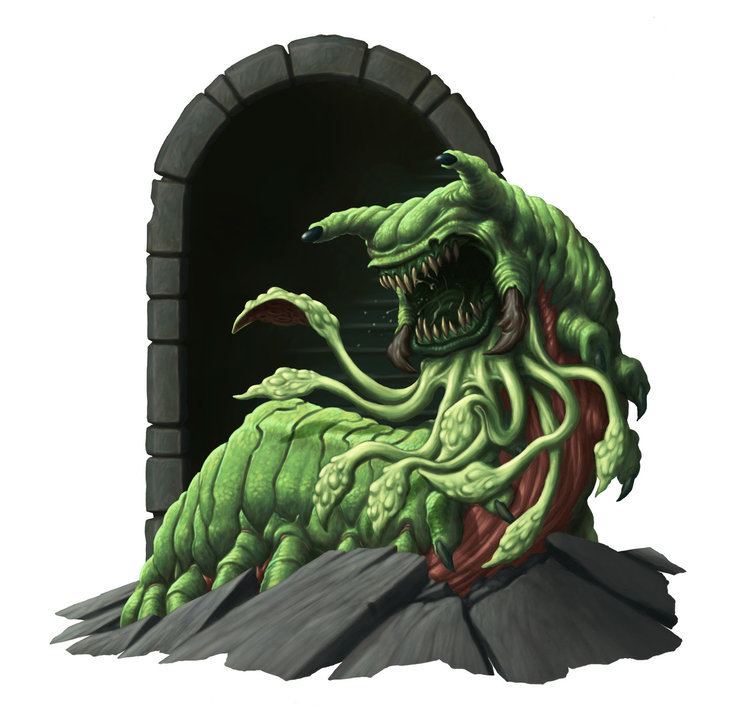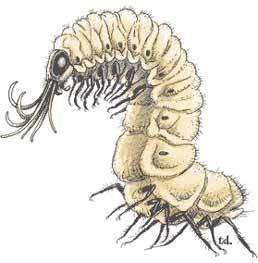Alignment Neutral Image Wizards.com image | Type Aberration | |
 | ||
Source books Monster Manual (various editions) | ||
Carrion crawler the dream thee oh sees full album
In the Dungeons & Dragons fantasy roleplaying game, the carrion crawler a type of fictional monster. A carrion crawler is described as a large yellow and green caterpillar-like aberration. The carrion crawler was introduced in the game's first supplement, Greyhawk, in 1975. The carrion crawler subsequently appeared in the first edition Advanced Dungeons & Dragons game's original Monster Manual sourcebook, and then continued to appear in the game's second edition, third edition, and fourth edition.
Contents
- Carrion crawler the dream thee oh sees full album
- Thee oh sees carrion crawler
- Dungeons Dragons 1974 1976
- Advanced Dungeons Dragons 1st edition 1977 1988
- Dungeons Dragons 1977 1999
- Advanced Dungeons Dragons 2nd edition 1989 1999
- Dungeons Dragons 30 edition 2000 2002
- Dungeons Dragons 35 edition 2003 2007
- Dungeons Dragons 4th edition 2008 2013
- Dungeons Dragons 5th edition 2014
- Description
- Carrion crawlers in other media
- DD Miniatures
- Licensing
- References

Thee oh sees carrion crawler
Dungeons & Dragons (1974-1976)

The carrion crawler was introduced to the game in its first supplement, Greyhawk (1975). It is described as a worm-shaped scavenger whose touch causes paralyzation.
Advanced Dungeons & Dragons 1st edition (1977-1988)

The carrion crawler appears in the first edition Monster Manual (1977), where it is described as a worm-like cephalopod that scavenges in subterranean areas.
Dungeons & Dragons (1977-1999)
This edition of the D&D game included its own version of the carrion crawler, in the Dungeons & Dragons Basic Set (1977, 1981, 1983). The carrion crawler was also later featured in the Dungeons & Dragons Game set (1991), the Dungeons & Dragons Rules Cyclopedia (1991), the Classic Dungeons & Dragons Game set (1994), and the Dungeons & Dragons Adventure Game set (1999).
Advanced Dungeons & Dragons 2nd edition (1989-1999)
The carrion crawler appears first in the Monstrous Compendium Volume One (1989), and is reprinted in the Monstrous Manual (1993).
The carrion crawler was detailed in Dragon #267 (January 2000), in the "Ecology of the Carrion Crawler".
The aquatic carrion crawler appeared in Dungeon #79 (March 2000).
Dungeons & Dragons 3.0 edition (2000-2002)
The carrion crawler appears in the Monster Manual for this edition (2000).
Dungeons & Dragons 3.5 edition (2003-2007)
The carrion crawler appears in the revised Monster Manual for this edition (2003).
Dungeons & Dragons 4th edition (2008-2013)
The carrion crawler appears in the Monster Manual for this edition (2008), including the enormous carrion crawler.
Dungeons & Dragons 5th edition (2014-)
The carrion crawler appears in the Monster Manual for this edition (2014).
Description
The carrion crawler was one of the earliest creatures introduced in the D&D game. In all editions of the game, carrion crawlers are said to live underground, but will sometimes go to the surface for food. They are akin in appearance to a 3-to-4-foot-long (0.91 to 1.22 m) centipede. A carrion crawler possesses eight long tentacles protruding from the sides of its head, which allow it to stun its prey. The creature eats carrion, but it is known to kill live prey. Carrion crawlers are of neutral alignment.
Carrion crawlers in other media
Carrion crawlers can be found in the Dungeons & Dragons games Baldur's Gate, Baldur's Gate II: Shadows of Amn and Icewind Dale. In Baldur's Gate II a carrion crawler plays the role as an old man's companion. The player has a choice whether or not to kill the carrion crawler, to take its blood for a quest. They are also a creature in Return to the Temple of Elemental Evil.
D&D Miniatures
The carrion crawler appears in the D&D Miniatures: Dragoneye set #41 (2004).
It also appears in the D&D Miniatures set Against the Giants: Enormous Carrion Crawler (#54).
Licensing
The carrion crawler is considered a "Product Identity" by Wizards of the Coast and as such is not released under its Open Game License.
